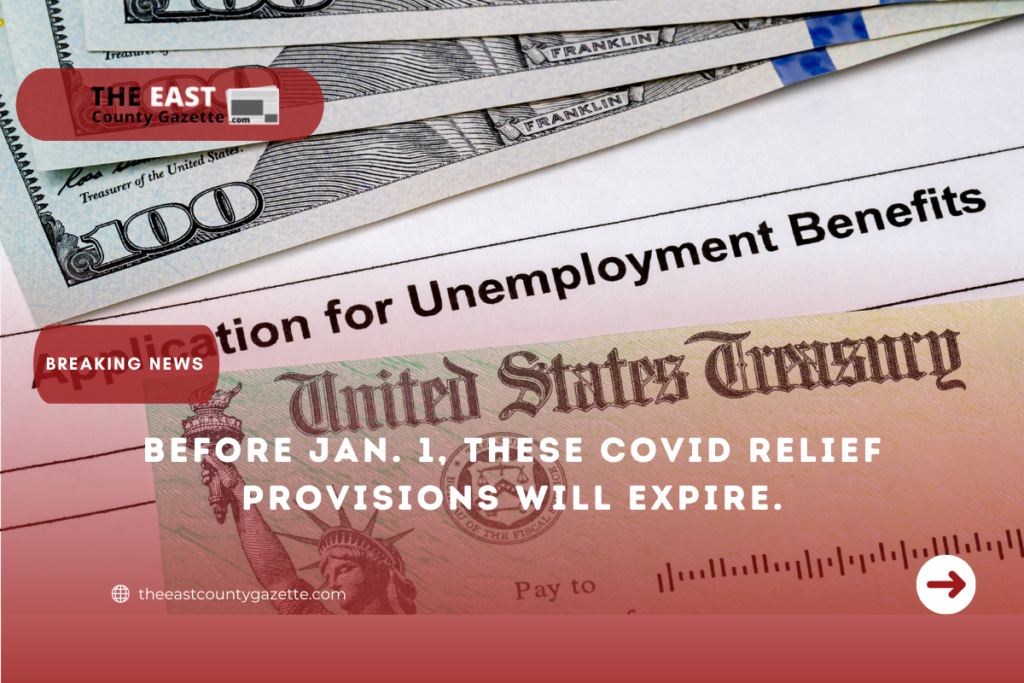It is not just the increased Child Tax Credit that is to blame. The expiration of the additional $1,600 for parents (or $1,000 depending on the age of the child) is only one of a number of COVID relief provisions that will be phased down over the next few weeks.
In accordance with President Joe Biden’s American Rescue Plan, the enhanced Child Tax Credit was enacted over a one-year period, while many Democrats believe it should be made permanent.
They intend to address the subject in the new year as part of the Build Back Better Act, which has been blocked since crucial moderate Sen. Joe Manchin (D-WV) recently stated that he will vote nay on the legislation.
According to the Tax Foundation, the enlarged CTC is one of approximately 30 tax policies that are set to expire this next week.
Alex Muresianu, a federal policy analyst at the Tax Foundation who contributed to the compilation of the list, says, “There are significantly more provisions that are expiring this year than there would be in other years.”
This is primarily due to the fact that a lot of these things were always designed to be temporary COVID relief measures.
The Joint Committee on Taxation of the United States Congress keeps track of expiring provisions as well.
According to a document prepared at the beginning of 2021, prior to the introduction of legislation such as the American Rescue Plan, the committee identified 25 tax provisions that would expire this year and numerous others that would expire in the years ahead.
The Earned Income Tax Credit has been modified.
Two other provisions, including enhanced versions of the Earned Income Tax Credit and the Child and Dependent Care Credit, are due to expire at the start of the 2018 fiscal year.
When the upcoming tax filing season comes around, the enlarged Earned Income Tax Credit will be received in large part by American taxpayers’ wallets. The impact of the reversion, on the other hand, will have an influence on Americans’ tax files in 2023.
Similarly, the Expansion of the Child and Dependent Care Tax Credit, a provision for childcare and other dependent expenses, will appear in significant part on upcoming federal tax returns but will be eliminated for tax returns filed in 2022 if the reversion is enacted as planned.
Read More: Another January 6 Like Attack Can Happen Again If Trump Looses in 2024
Child poverty and food insecurity have both decreased, according to researchers, as a result of enhanced credit eligibility.
The impact of the Child Tax Credit reversion could be noticed more immediately because the Internal Revenue Service sent the last monthly payment in mid-December, making the reversion more noticeable right away.
However, even though no cheques will be mailed out on January 15, some of the remaining Child Tax Credit payments will be available to parents when they file their taxes.
The Build Back Better plan would have extended the Child Tax Credit as well as the Earned Income Tax Credit for an additional year under certain conditions. Congress, on the other hand, might act in 2022 and apply any modifications that are made retroactively.
Changes to philanthropic contributions as well as research and development are being considered.
There are also other regulations relating to above-the-line charitable contributions that will be eliminated in the coming year, as well as the recent temporary suspension of various limits on individual deductions for charitable contributions.
It was the CARES Act, which was signed into law by President Donald Trump in 2020, that contained those requirements.
Other provisions that will expire at the end of 2021 will have an impact on enterprises. The Employee Retention Credit for small businesses has been extended through December 31, according to the American Rescue Plan. This credit allows firms to offset COVID-related losses by up to $7,000 per employee each quarter.
In addition, the Tax Foundation provided a list of provisions from the 2017 Tax Cuts and Jobs Act that were set to expire. As Muresianu pointed out, one of those sections, which deals with research and development expenses, could be quite important in the future.
In his opinion, forcing businesses to shift away from depreciating assets and investing in research and development to spreading deductions over five years would result in a bias against R&D investment.
Another deadline is coming to an end this week at the Federal Reserve, as the central bank’s temporary U.S. dollar liquidity swap lines with central banks across the world are scheduled to expire.
Read More: Student Debt Cancellation is Insult to Millions of Americans. Here’s Why?
When the arrangements were first announced in March 2020, the Federal Reserve stated that they were designed to “ease constraints in global funding markets, thereby aiding in mitigating the effects of such limitations on the supply of credit to individuals and companies.”

